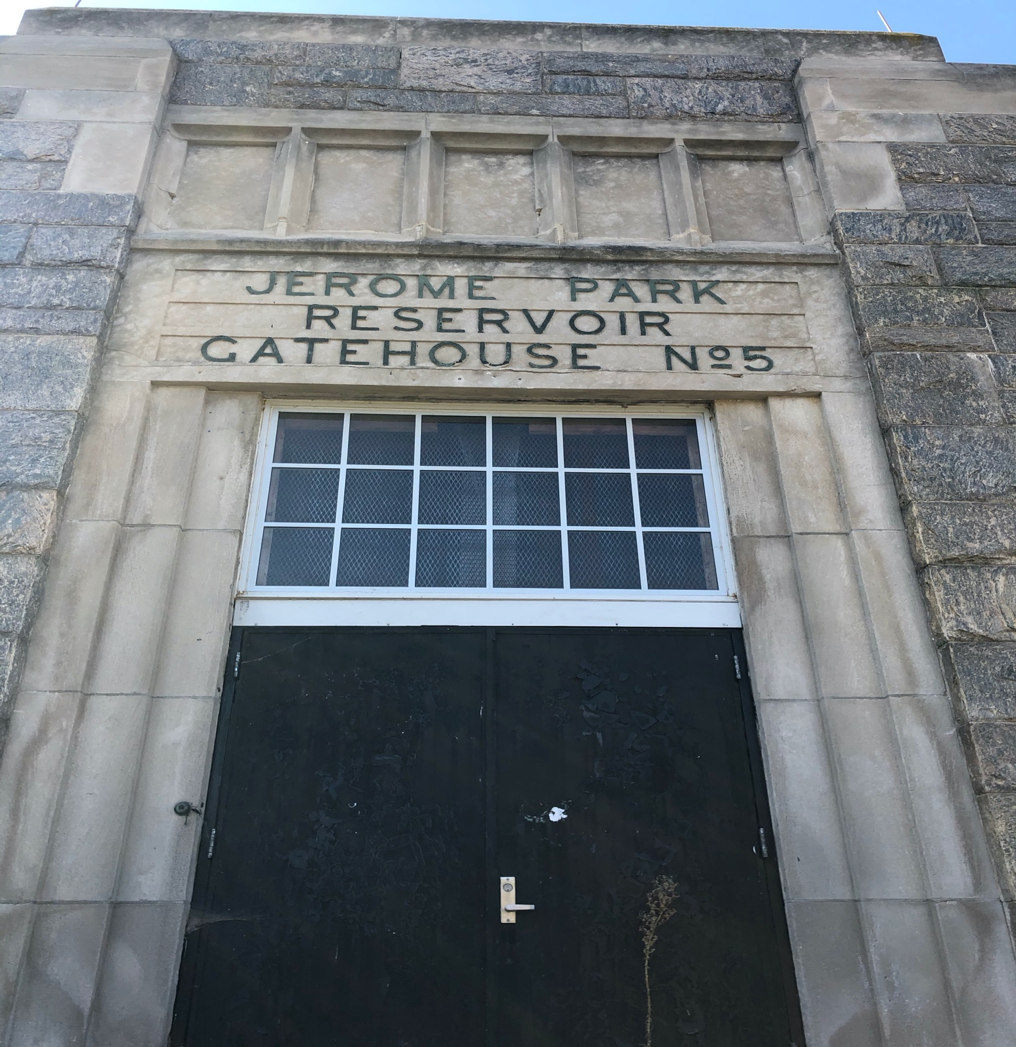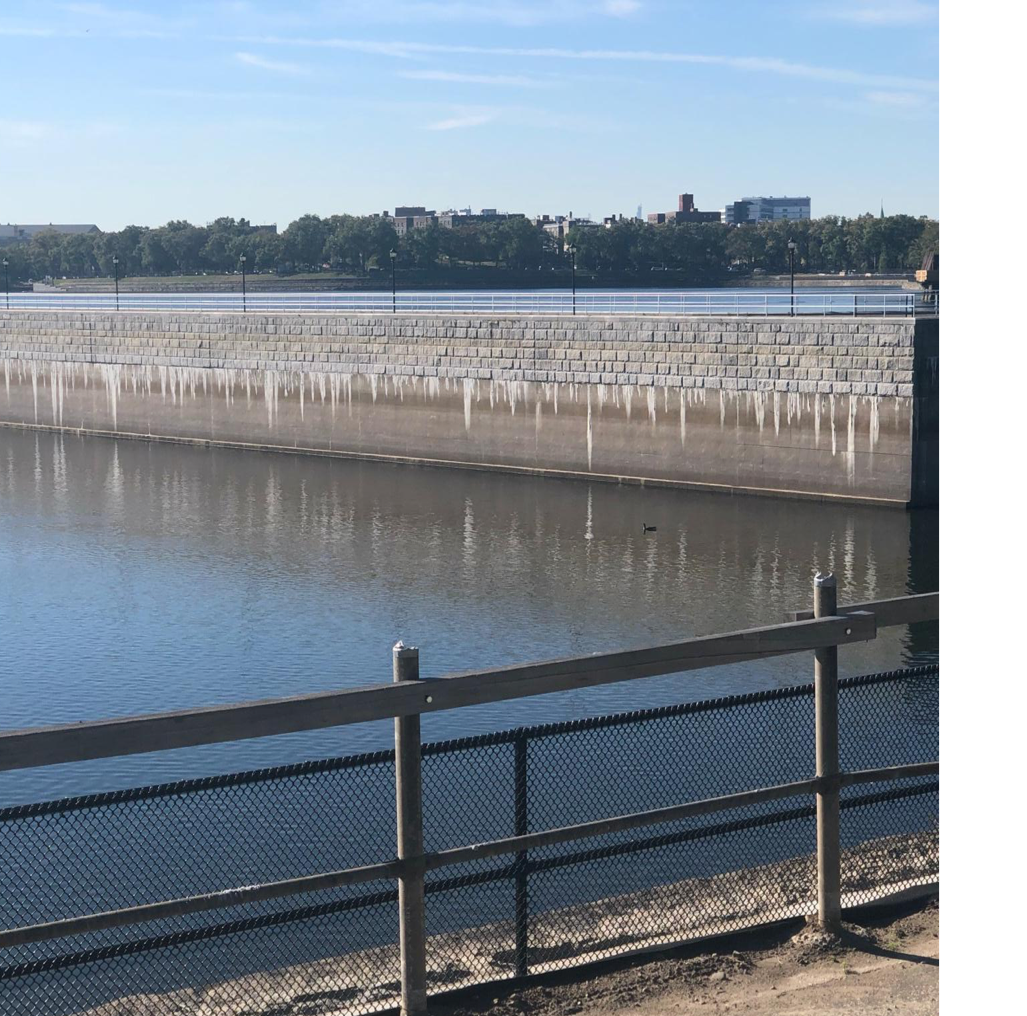Jerome Park Reservoir Renovation Raises Concerns about Access
by Lysa Vanible
Jerome Park Reservoir has been under construction for close to two decades, making the presence of huge bulldozers, Ford F250 vehicles, and workers equipped in orange safety vests routine for area residents. Managed by the Department of Environmental Protection (DEP), the 15-million-dollar rehabilitation includes gatehouses, installation of new, lower fencing, and upgraded security infrastructure and is scheduled to continue through 2021. But some contend that the upgrade of this historic site does not guarantee free access to the reservoir’s amenities by locals.
The reservoir can hold up to 773 million gallons of water and supplies 10 percent of New York City’s water supply, according to the DEP’s website. The newly renovated Croton Branch aqueduct discharges into its southern end through two brick-lined aqueducts forming a horseshoe shape, a fitting reminder that the site originally housed the Jerome Park Racetrack where the Triple Crown was run.
Professor Hari Pant, chair of Lehman’s environmental science department, explained the importance of reservoirs is due to the scarcity of freshwater.
“Only a small fraction of the earth’s water is freshwater; 97.4 percent is salt-water, 2.6 percent is freshwater. Out of 2.6 percent of freshwater, about 1.98percent is in the ice and snow, such as ice sheets and glaciers, among the other 0.59 percent in the groundwater, which leave a tiny fraction of the freshwater in lakes, rivers and the atmosphere.” Reservoirs, he added, “are a small part of the water supply system in the world. The Western part of the United States is much drier compared to the Eastern part of the United States, hence there are more viable freshwater sources here.”





Professor Yuri Gorokhovic, an instructor in the environmental science department at Lehman until 2000, was employed by DEP for nine years as a manager of Geographic Information Systems in the Division of Water Quality and Control.
“The Bronx Jerome Park Reservoir is filtered at the Van Cortlandt filtration plant to remove solids like sand and mud,” he explained. “The other kind of filtration is called microfiltration, which is a process when the water is filtered to strip the suspended solids from bacteria. The job of the DEP is to keep the water clean for all residents of the Bronx.”
Air Force veteran and resident, Edward Sliva, 88, said “I’ve lived here for 30 years with my three sons and wife. The construction has been going on since my grandson went to DeWitt Clinton High School and after he graduated from four years of Lehman College.”
Others expressed concerns about access.
Lehman freshman Casselina McCord, 18, said, “as a resident of the Bronx, I have concerns about the access for the community to the reservoir’s resources to learn from this basin, so that the people would know more about what it is and how the process works. I am enrolled in an environmental science course, and it’s really about the people who have the power to do something; the people of the Bronx.”
Lehman environmental science major and international transfer student Dabibe Bardgoi, 26, said, “I am an environmental science activist; I want to protect the earth against climate change. The construction is good for the area. It won’t be good for consumption if the reservoir isn’t protected. We have to be careful of pollution.”
Pant warned: “If we don’t pay attention in protecting our freshwater sources, the world may face severe shortages of it, soon in the future.”


